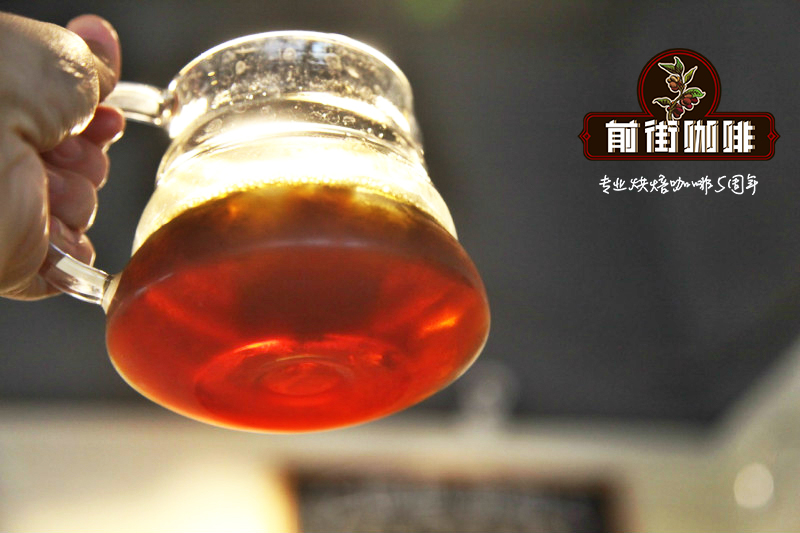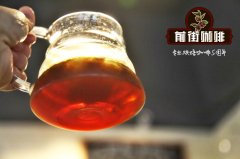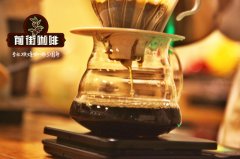Coffee Culture and current situation of Coffee planting Industry in Laos how to drink coffee in Laos?

Professional coffee knowledge exchange more coffee bean information please follow the coffee workshop (Wechat official account cafe_style)
Coffee, like red wine, knows the origin and characteristics of the things in the cup, and feels more intimate to drink. In this issue, I would like to introduce you to Laos coffee.
Coffee is Laos's fifth largest export. The Boloven Plateau (Bolaven Plateau), located in the south, is the largest coffee growing area in the country, where about 95 per cent of Lao coffee is produced. The planting area is located at 15 degrees north latitude, from 600 to 1300 meters above sea level, covering an area of more than 500square kilometers, with abundant sunshine and Rain Water, cool temperature and slightly acidic fertile volcanic soil, which is a very good planting condition and has the potential to produce a large number of high-quality Arabica beans. Laos coffee is mellow with mild citrus and floral aromas.
In the 1920s, the French transplanted three varieties of coffee trees from Arabica, Robusta and Liberia from Vietnam to Laos. But the heavy frost in 1949 caused the death of a large number of coffee trees. Farmers abandoned disease-prone Arabica and cheap Liberia in favor of Robusta, which is more disease-resistant. According to 2001 data, 23000 households in 34000 hectares of agricultural land are engaged in coffee production, of which 88 per cent are Robusta and 12 per cent are Arabica. These include low-yield small farmers and systematically managed large manors. Most of the big manors have their own brands and processing plants. The Lao government cooperates with development agencies of various countries to introduce high-yielding Arabica trees with high yield and high quality into Laos to increase farmers' income.
The coffee harvest season is from October to February next year. If you are interested in visiting coffee farms, experiencing the life of farmers and picking coffee fruits by hand, you might as well take a trip to Laos in December.
Important Notice :
前街咖啡 FrontStreet Coffee has moved to new addredd:
FrontStreet Coffee Address: 315,Donghua East Road,GuangZhou
Tel:020 38364473
- Prev

How about the left aristocrat-Laos Coffee planting History and Variety introduction of Laos Coffee?
Professional coffee knowledge exchange more coffee bean information please follow the coffee workshop (Wechat official account cafe_style) Laos coffee produced to Laos, before the emergence of European coffee companies in Taiwan, Lao coffee rarely appeared in the raw bean trading system. However, the coffee culture in Laos also began before World War II. In 1927, 90% of the output of the Borofen volcano in Laos was exported to
- Next

One of the 12 best kinds of coffee in the world. How to make Laos Coffee? world ranking of Laos Coffee
For more information on coffee beans, please follow the coffee workshop (Wechat official account cafe_style) Laos Dilta Coffee Manor AA selected Champion beans Lao DELTA AA one of the 12 best coffees in the world the history of Lao Coffee can be traced back to the early 20th century. French colonial rule introduced coffee beans into Laos. Many experts have been sent to assist the old man.
Related
- What documents do you need to go through to open a coffee shop? coffee shop coffee shop certificate processing process
- How to purchase Coffee beans in small Cafe how to choose a suitable supplier for domestic Coffee supply Company
- How to drink Starbucks Fragrance White Coffee? how to make Australian White Coffee? what Italian coffee beans are recommended?
- The Story of Flora Coffee: the name of Flora Coffee Bean and the implication of the Flowers on Florna Coffee
- How much does a cup of coffee cost? How much is the profit of a cup of coffee? What is the profit of the coffee shop in a year?
- Yunnan small Coffee, known as "fragrant Coffee", introduces the characteristics of Alpine Arabica Coffee producing areas in Yunnan, China
- 2023 latest Starbucks full menu price list how much is a cup of Starbucks coffee what is better to drink the most popular hot and cold drinks recommended
- Starbucks different kinds of Coffee Price list Starbucks menu 2023 Top Ten Best drinks in Starbucks
- Starbucks Spring praise Comprehensive matching Coffee Bean theme Story Packaging implication and taste description
- The cost of a cup of coffee latte American coffee cost price and selling price

